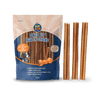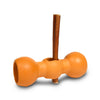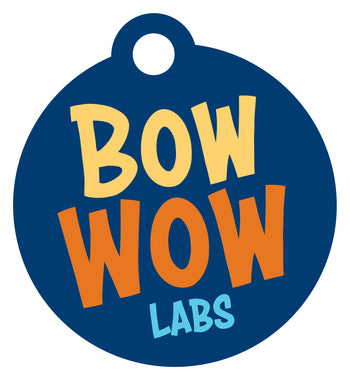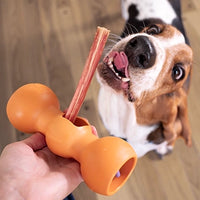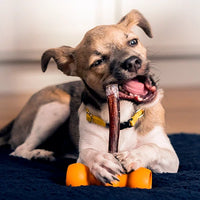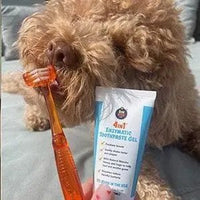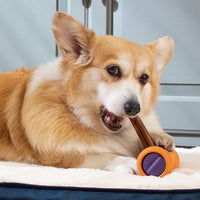The holiday season brings joy and togetherness, but for some dogs, an influx of visitors can bring both excitement and anxiety. Whether your dog is a social butterfly or tends to be more reserved, having strangers, especially children, in their space can be challenging. This guide will help you ensure your dog feels safe and comfortable with guests, offering practical tips for introductions, managing interactions, and creating a calm environment for everyone involved.
-
Setting the Stage: Preparing Your Dog’s Space Before Guests Arrive
- Create a Safe Retreat: For dogs, especially anxious ones, having a quiet, dedicated space where they can retreat is essential. Set up a cozy area in a separate room with familiar bedding, favorite toys, and fresh water to make them feel secure.
- Introduce Calming Scents or Sounds: Use natural calming scents like lavender (pet-safe options only) and/or play instrumental music to reduce overstimulation from new sounds and smells. Studies have shown that dogs exposed to instrumental music are calmer and exhibit less anxious behavior.1
- Routine is Key: Dogs are creatures of habit. Be sure to stick to their usual feeding, walking, and play schedule as much as possible. Consistency can help reduce stress even if the household is busier than usual.2

-
Friendly Dog Introductions: Managing Excitement
- When Guests First Enter: For dogs who get overexcited or protective, consider setting up a baby gate near the entrance to create a barrier between the dog and guests. This prevents them from rushing to the door and helps keep the entryway calm.
- Leash-Controlled Introductions: For overly excited dogs, the best way to ensure your guests feel comfortable is to allow initial greetings to occur while your pup is on a leash. This will prevent visitors from feeling overwhelmed, and it will also curtail unwanted jumping. Be sure to allow your dog to sniff and get to know each guest at their own pace. If you want your guests to offer your dog treats, make sure they are on the larger size and have the guest offer them to your pup with an open hand. This will ensure your dog gets the treat without the potential of nipping a fingertip as they grab for the tasty treat.
- Breaks for Overstimulation: Excited dogs can quickly become overstimulated. Give them breaks in a quiet room with a long-term chew like a bully stick, safely secured in a Bow Wow Buddy safety device. This will allow them a pause from the activity while also providing an engaging activity that will provide mental stimulation.
- For Overly Anxious Dogs: Encourage visitors to avoid direct eye contact and instead let the dog initiate contact. If your dog hesitates, instruct guests to keep initial interactions short and offer treats from a distance. But whatever you do, do not force an interaction. If your dog seems disengaged, let them return to their safe space.
-
Dog-Kid Interactions: Safety Tips and Guidelines
- Teach Kids Dog Etiquette: Before allowing any interaction, teach children to approach your dog calmly, avoid sudden movements, and refrain from touching sensitive areas like ears, face, and tail.
- Use Clear Boundaries: Set up a blanket or rug as a designated area for petting interactions. This visual cue helps both the dog and child understand where petting is encouraged and when the dog has left the “play zone.”
-
Always Supervise: Even with friendly dogs, supervision is crucial when kids are involved. Stand by and watch interactions, ready to step in if your dog shows signs of discomfort such as yawning, licking lips, tucking their tail, or moving away.3
-
Extra Steps for Success with Nervous or Reactive Dogs
- Desensitize Your Dog Beforehand: For highly reactive or nervous dogs, use gradual exposure training to ease them into accepting visitors. Invite one friend over at a time in the weeks before the holidays to build familiarity and comfort.
-
Consider Calming Aids: Natural calming supplements, such as chews with passion flower, CBD, or valerian root, can help anxious dogs be calmer. Ensure that you give the chew at least 30-45 minutes in advance of the guest's arrival, as this allows time for digestion.
-
Planning for a Stress-Free Goodbye
- Wind Down Time: As guests begin to leave, keep your dog in a quiet room to prevent barking or stress during goodbyes. This helps reduce the excitement spike that can come with guests’ departure.
- After-Visit Reset: Once guests have gone, spend some one-on-one time with your dog, offering a walk or play session to release any leftover energy. This helps them feel relaxed and returns them to their regular routine.
Holiday visits don’t have to be stressful for your dog or your guests. With a little planning, positive reinforcement, and by respecting your dog’s comfort level, you can create an environment where everyone enjoys a safe, peaceful holiday season together. Whether your dog loves attention or prefers solitude, these steps will help set your pet up for success, ensuring a harmonious celebration for all.
Johnna Devereaux is a Clinical Pet Nutritionist, canine wellness expert and Chief Nutrition Officer for Bow Wow Labs.
* This article is for informational purposes only. It is not, nor is it intended to be, a substitute for professional medical or veterinary advice, diagnosis, or treatment and should never be relied upon or perceived as specific medical or veterinary advice.
**The points of view expressed above are those of our clinical nutritionist and are supported by science, her education and experience. We are committed to providing the best, most straightforward, and most helpful information possible to help keep your dog happy, healthy and safe.
- Lindig AM, McGreevy PD, Crean AJ. Musical Dogs: A Review of the Influence of Auditory Enrichment on Canine Health and Behavior. Animals : an Open Access Journal from MDPI. 2020;10(1):127. doi:10.3390/ani10010127
- Patterdale S, CPDT-KA, May 26 CU, May 26 2023 | 3 Minutes Updated:, Minutes 2023 | 3. Why Your Dog Needs a Routine at Every Stage of Life. American Kennel Club. https://www.akc.org/expert-advice/health/why-your-dog-needs-routine/. Accessed November 15, 2024.
- 3. Signs of Anxiety in Dogs and Puppies. https://www.petmd.com/dog/behavior/signs-anxiety-dogs-and-puppies. Accessed November 15, 2024.

